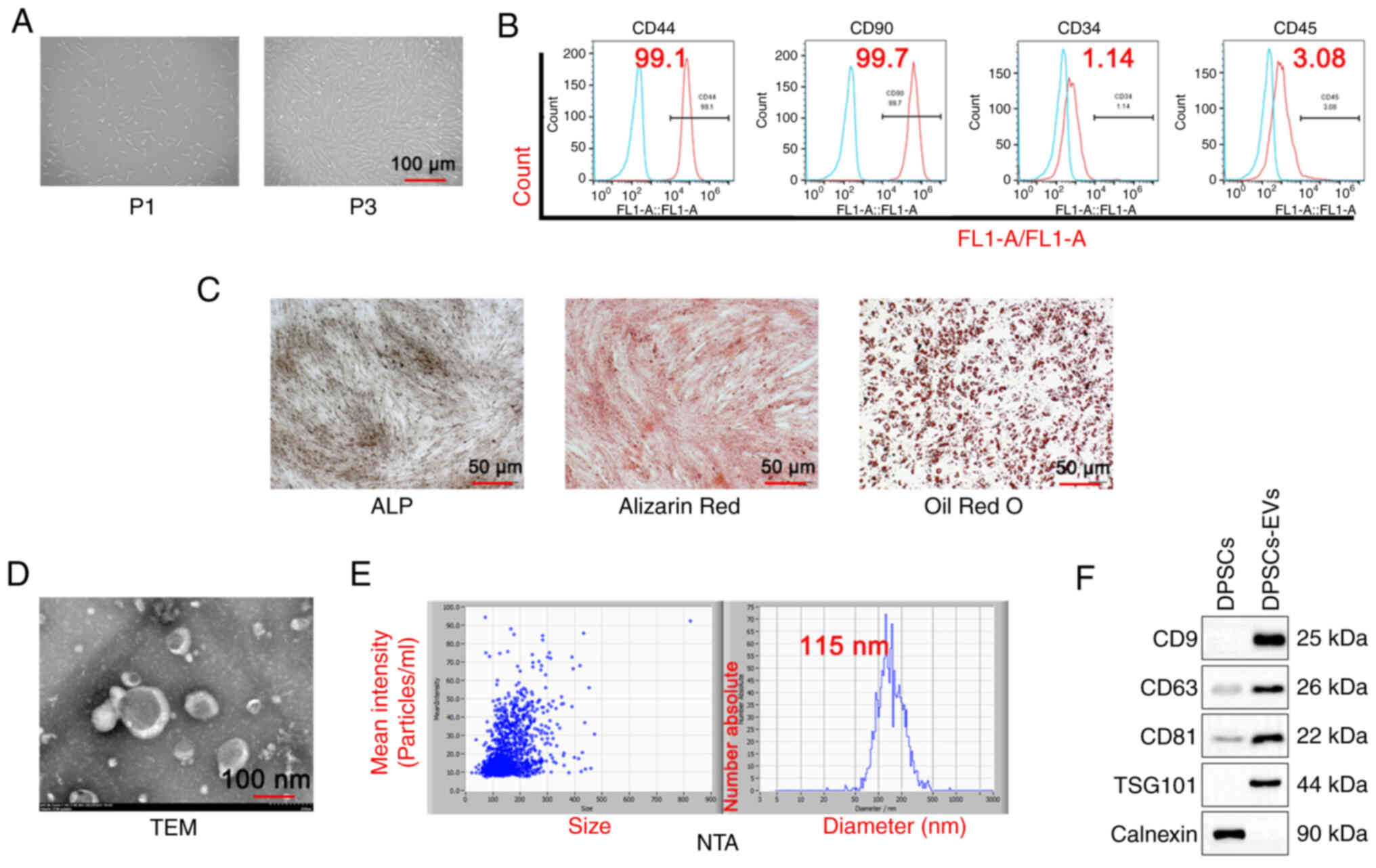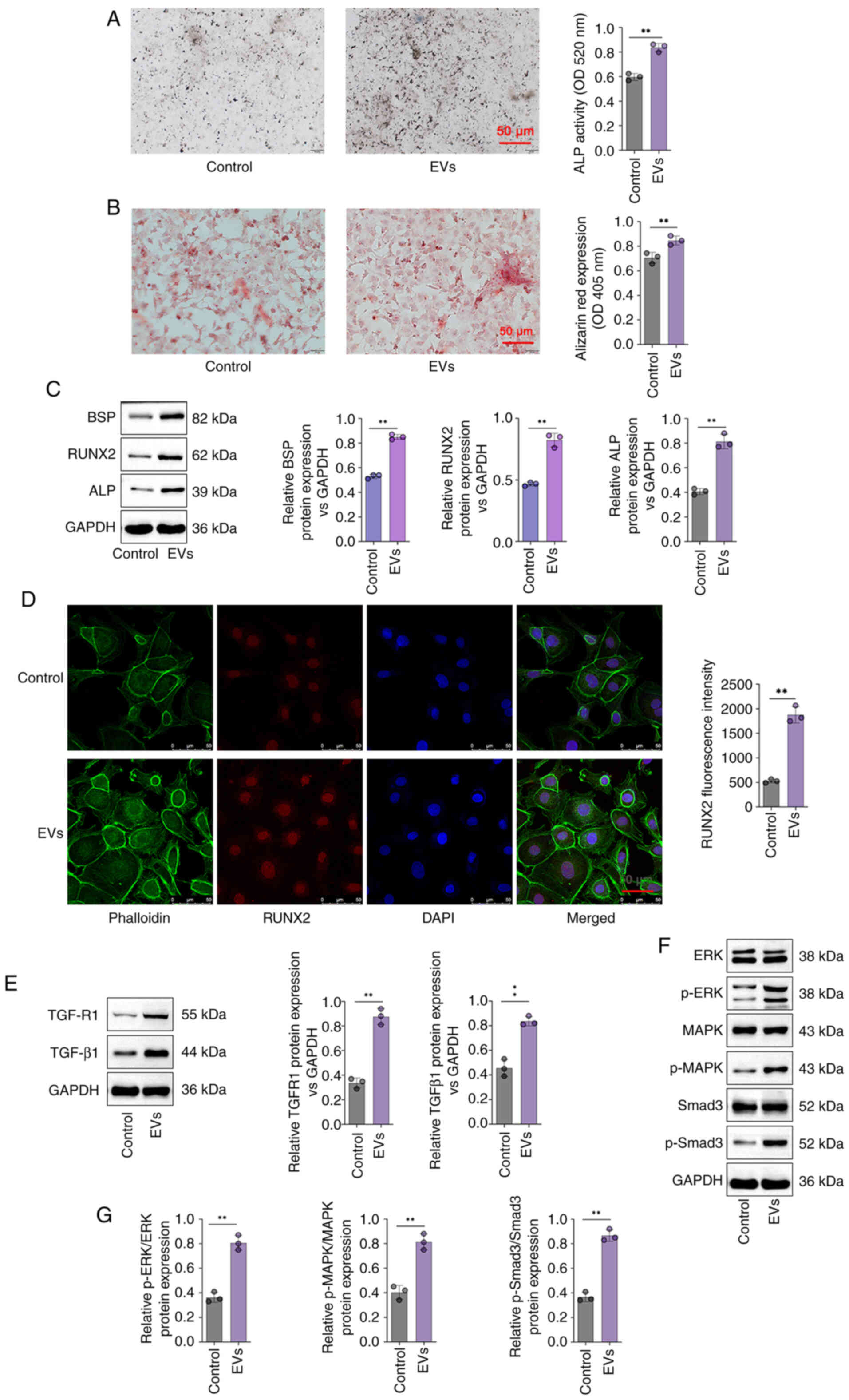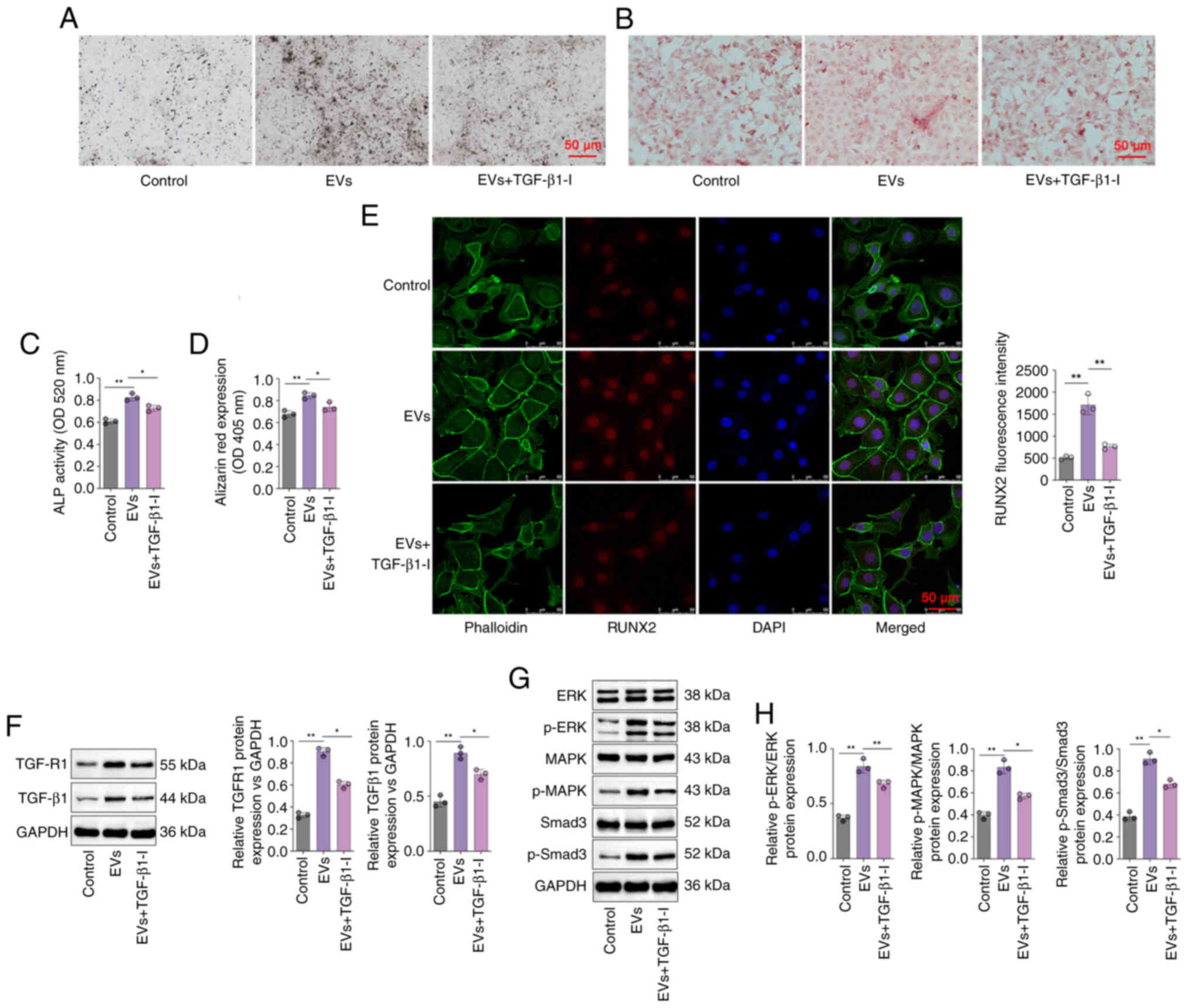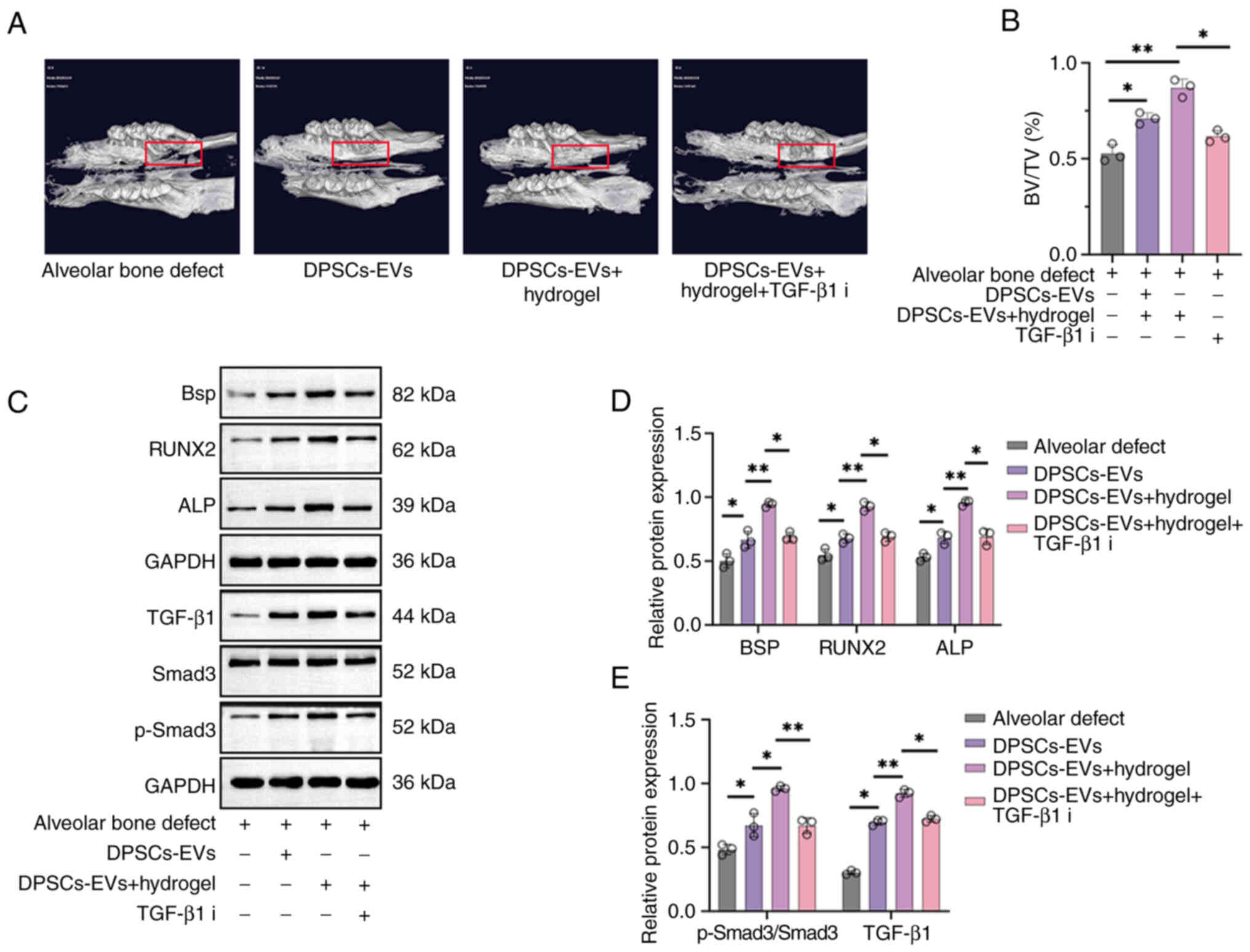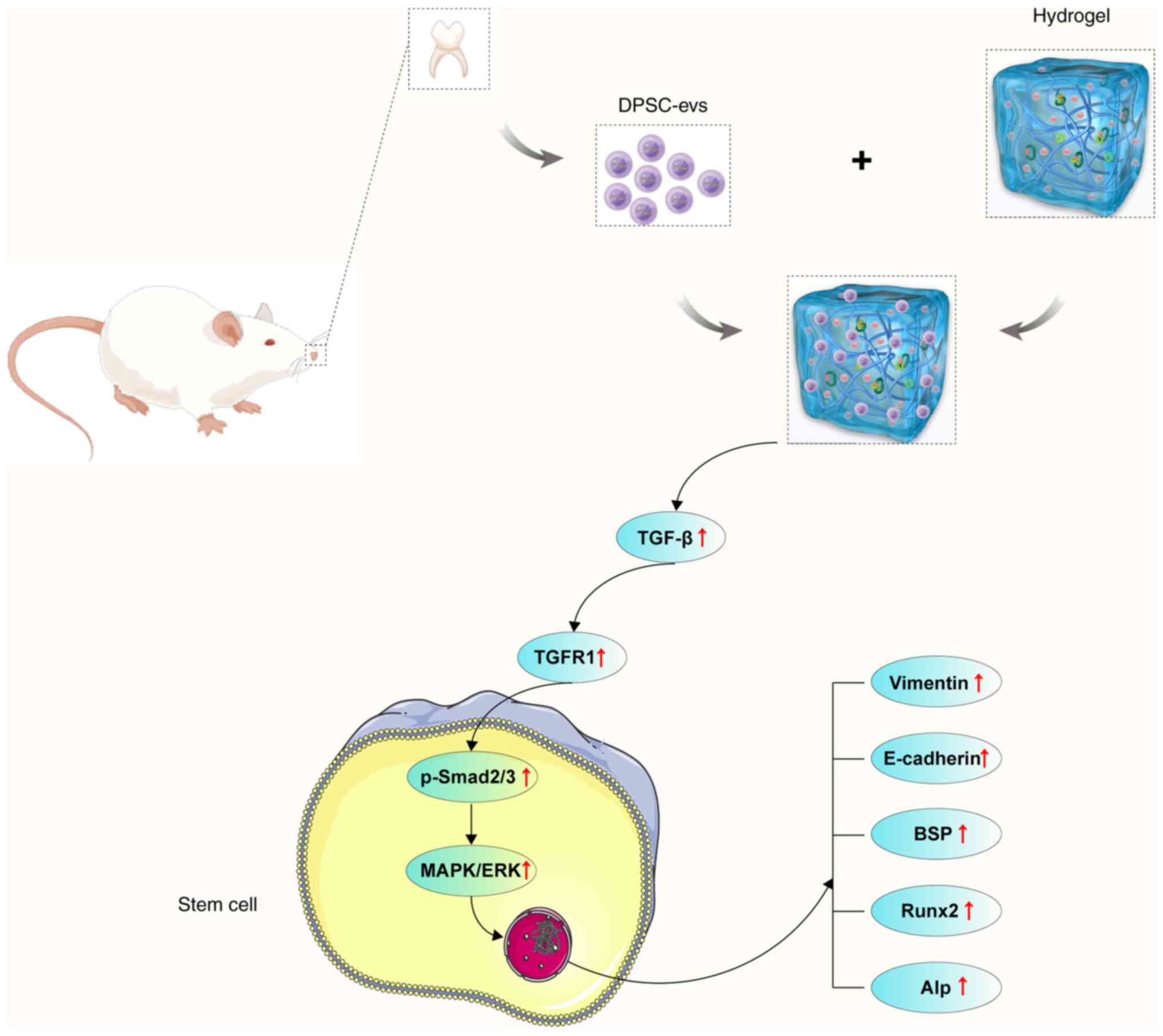|
1
|
Hollý D, Klein M, Mazreku M, Zamborský R,
Polák Š, Danišovič Ľ and Csöbönyeiová M: Stem cells and their
derivatives-implications for alveolar bone regeneration: A
comprehensive review. Int J Mol Sci. 22:117462021. View Article : Google Scholar : PubMed/NCBI
|
|
2
|
Pervizaj-Oruqaj L, Selvakumar B, Ferrero
MR, Heiner M, Malainou C, Glaser RD, Wilhelm J, Bartkuhn M, Weiss
A, Alexopoulos I, et al: Alveolar macrophage-expressed Plet1 is a
driver of lung epithelial repair after viral pneumonia. Nat Commun.
15:872024. View Article : Google Scholar : PubMed/NCBI
|
|
3
|
Lu X, Yu S, Chen G, Zheng W, Peng J, Huang
X and Chen L: Insight into the roles of melatonin in bone tissue
and bone-related diseases (Review). Int J Mol Med. 47:822021.
View Article : Google Scholar : PubMed/NCBI
|
|
4
|
Baldwin P, Li DJ, Auston DA, Mir HS, Yoon
RS and Koval KJ: Autograft, allograft, and bone graft substitutes:
Clinical evidence and indications for use in the setting of
orthopaedic trauma surgery. J Orthop Trauma. 33:203–213. 2019.
View Article : Google Scholar : PubMed/NCBI
|
|
5
|
Wang HD and Zhang YZ: Editorial
commentary: Reduce the failure risk: A challenge to reduce the risk
of using hybrid graft in anterior cruciate ligament reconstruction.
Arthroscopy. 34:2936–2938. 2018. View Article : Google Scholar : PubMed/NCBI
|
|
6
|
Lei F, Li M, Lin T, Zhou H, Wang F and Su
X: Treatment of inflammatory bone loss in periodontitis by stem
cell-derived exosomes. Acta Biomater. 141:333–343. 2022. View Article : Google Scholar : PubMed/NCBI
|
|
7
|
Li X, Zhang S, Zhang Z, Guo W, Chen G and
Tian W: Development of immortalized Hertwig's epithelial root
sheath cell lines for cementum and dentin regeneration. Stem Cell
Res Ther. 10:32019. View Article : Google Scholar : PubMed/NCBI
|
|
8
|
Ouchi T and Nakagawa T: Mesenchymal stem
cell-based tissue regeneration therapies for periodontitis. Regen
Ther. 14:72–78. 2020. View Article : Google Scholar : PubMed/NCBI
|
|
9
|
Park KR, Kim S, Cho M and Yun HM: Limonoid
triterpene, obacunone increases runt-related transcription factor 2
to promote osteoblast differentiation and function. Int J Mol Sci.
22:24832021. View Article : Google Scholar : PubMed/NCBI
|
|
10
|
Bi F, Tang H, Zhang Z, Lyu Y, Huo F, Chen
G and Guo W: Hertwig's epithelial root sheath cells show potential
for periodontal complex regeneration. J Periodontol. 94:263–276.
2023. View Article : Google Scholar : PubMed/NCBI
|
|
11
|
Zhang S, Yang Y, Jia S, Chen H, Duan Y, Li
X, Wang S, Wang T, Lyu Y, Chen G and Tian W: Exosome-like vesicles
derived from Hertwig's epithelial root sheath cells promote the
regeneration of dentin-pulp tissue. Theranostics. 10:5914–5931.
2020. View Article : Google Scholar : PubMed/NCBI
|
|
12
|
Gupta D, Zickler AM and El Andaloussi S:
Dosing extracellular vesicles. Adv Drug Deliv Rev. 178:1139612021.
View Article : Google Scholar : PubMed/NCBI
|
|
13
|
Harrell CR, Jovicic N, Djonov V,
Arsenijevic N and Volarevic V: Mesenchymal stem cell-derived
exosomes and other extracellular vesicles as new remedies in the
therapy of inflammatory diseases. Cells. 8:16052019. View Article : Google Scholar : PubMed/NCBI
|
|
14
|
Mattei V and Delle Monache S: Dental pulp
stem cells (DPSCs) and tissue regeneration: Mechanisms mediated by
direct, paracrine, or autocrine effects. Biomedicines. 11:3862023.
View Article : Google Scholar : PubMed/NCBI
|
|
15
|
Mattei V, Martellucci S, Pulcini F,
Santilli F, Sorice M and Delle Monache S: Regenerative potential of
DPSCs and revascularization: direct, paracrine or autocrine effect?
Stem Cell Rev Rep. 17:1635–1646. 2021. View Article : Google Scholar : PubMed/NCBI
|
|
16
|
Wang X and Thomsen P: Mesenchymal stem
cell-derived small extracellular vesicles and bone regeneration.
Basic Clin Pharmacol Toxicol. 128:18–36. 2021. View Article : Google Scholar : PubMed/NCBI
|
|
17
|
Zhang S, Chuah SJ, Lai RC, Hui JHP, Lim SK
and Toh WS: MSC exosomes mediate cartilage repair by enhancing
proliferation, attenuating apoptosis and modulating immune
reactivity. Biomaterials. 156:16–27. 2018. View Article : Google Scholar : PubMed/NCBI
|
|
18
|
Hade MD, Suire CN and Suo Z: Mesenchymal
stem cell-derived exosomes: applications in regenerative medicin.
Cells. 10:19592021. View Article : Google Scholar : PubMed/NCBI
|
|
19
|
Otsuru S, Desbourdes L, Guess AJ, Hofmann
TJ, Relation T, Kaito T, Dominici M, Iwamoto M and Horwitz EM:
Extracellular vesicles released from mesenchymal stromal cells
stimulate bone growth in osteogenesis imperfecta. Cytotherapy.
20:62–73. 2018. View Article : Google Scholar : PubMed/NCBI
|
|
20
|
Familtseva A, Jeremic N and Tyagi SC:
Exosomes: Cell-created drug delivery systems. Mol Cell Biochem.
459:1–6. 2019. View Article : Google Scholar : PubMed/NCBI
|
|
21
|
Wu F, Lei N, Yang S, Zhou J, Chen M, Chen
C, Qiu L, Guo R, Li Y and Chang L: Treatment strategies for
intrauterine adhesion: Focus on the exosomes and hydrogels. Front
Bioeng Biotechnol. 11:12640062023. View Article : Google Scholar : PubMed/NCBI
|
|
22
|
Chew JRJ, Chuah SJ, Teo KYW, Zhang S, Lai
RC, Fu JH, Lim LP, Lim SK and Toh WS: Mesenchymal stem cell
exosomes enhance periodontal ligament cell functions and promote
periodontal regeneration. Acta Biomater. 89:252–264. 2019.
View Article : Google Scholar : PubMed/NCBI
|
|
23
|
Kandalam U, Kawai T, Ravindran G, Brockman
R, Romero J, Munro M, Ortiz J, Heidari A, Thomas R, Kuriakose S, et
al: Predifferentiated gingival stem cell-induced bone regeneration
in rat alveolar bone defect model. Tissue Eng Part A. 27:424–436.
2021. View Article : Google Scholar : PubMed/NCBI
|
|
24
|
Fang CH, Sun CK, Lin YW, Hung MC, Lin HY,
Li CH, Lin IP, Chang HC, Sun JS and Chang JZ:
Metformin-incorporated gelatin/nano-hydroxyapatite scaffolds
promotes bone regeneration in critical size rat alveolar bone
defect model. Int J Mol Sci. 23:5582022. View Article : Google Scholar : PubMed/NCBI
|
|
25
|
Guo Q, Zheng J, Lin H, Han Z, Wang Z, Ren
J, Zhai J, Zhao H, Du R and Li C: Conditioned media of deer antler
stem cells accelerate regeneration of alveolar bone defects in
rats. Cell Prolif. 56:e134542023. View Article : Google Scholar : PubMed/NCBI
|
|
26
|
Witwer KW, Goberdhan DC, O'Driscoll L,
Théry C, Welsh JA, Blenkiron C, Buzás EI, Di Vizio D, Erdbrügger U,
Falcón-Pérez JM, et al: Updating MISEV: Evolving the minimal
requirements for studies of extracellular vesicles. J Extracell
Vesicles. 10:e121822021. View Article : Google Scholar : PubMed/NCBI
|
|
27
|
Gelibter S, Marostica G, Mandelli A,
Siciliani S, Podini P, Finardi A and Furlan R: The impact of
storage on extracellular vesicles: A systematic study. J Extracell
Vesicles. 11:e121622022. View Article : Google Scholar : PubMed/NCBI
|
|
28
|
Matsuzaka Y and Yashiro R: Therapeutic
strategy of mesenchymal-stem-cell-derived extracellular vesicles as
regenerative medicine. Int J Mol Sci. 23:64802022. View Article : Google Scholar : PubMed/NCBI
|
|
29
|
Storti G, Scioli MG, Kim BS, Orlandi A and
Cervelli V: Adipose-derived stem cells in bone tissue engineering:
Useful tools with new applications. Stem Cells Int.
2019:36738572019. View Article : Google Scholar : PubMed/NCBI
|
|
30
|
Wan Z, Zhang P, Liu Y, Lv L and Zhou Y:
Four-dimensional bioprinting: Current developments and applications
in bone tissue engineering. Acta Biomater. 101:26–42. 2020.
View Article : Google Scholar : PubMed/NCBI
|
|
31
|
Chen Y, Yang Q, Lv C, Chen Y, Zhao W, Li
W, Chen H, Wang H, Sun W and Yuan H: NLRP3 regulates alveolar bone
loss in ligature-induced periodontitis by promoting osteoclastic
differentiation. Cell Prolif. 54:e129732021. View Article : Google Scholar : PubMed/NCBI
|
|
32
|
Lin W, Li Q, Zhang D, Zhang X, Qi X, Wang
Q, Chen Y, Liu C, Li H, Zhang S, et al: Mapping the immune
microenvironment for mandibular alveolar bone homeostasis at
single-cell resolution. Bone Res. 9:172021. View Article : Google Scholar : PubMed/NCBI
|
|
33
|
Kittaka M, Yoshimoto T, Schlosser C,
Rottapel R, Kajiya M, Kurihara H, Reichenberger EJ and Ueki Y:
Alveolar bone protection by targeting the SH3BP2-SYK axis in
osteoclasts. J Bone Miner Res. 35:382–395. 2020. View Article : Google Scholar : PubMed/NCBI
|
|
34
|
Huang X, Xie M, Xie Y, Mei F, Lu X, Li X
and Chen L: The roles of osteocytes in alveolar bone destruction in
periodontitis. J Transl Med. 18:4792020. View Article : Google Scholar : PubMed/NCBI
|
|
35
|
Tan J, Dai A, Pan L, Zhang L, Wang Z, Ke
T, Sun W, Wu Y, Ding PH and Chen L: Inflamm-aging-related cytokines
of IL-17 and IFN-γ accelerate osteoclastogenesis and periodontal
destruction. J Immunol Res. 2021:99190242021. View Article : Google Scholar : PubMed/NCBI
|
|
36
|
Zhu L, Zhou C, Chen S, Huang D, Jiang Y,
Lan Y, Zou S and Li Y: Osteoporosis and alveolar bone health in
periodontitis niche: A predisposing factors-centered review. Cells.
11:33802022. View Article : Google Scholar : PubMed/NCBI
|
|
37
|
Setiawan M, Jäger A, Daratsianos N,
Reimann S, Chen J, Schmöle AC, Derichs-Schönthal D and Konermann A:
Impact of the endocannabinoid system on murine cranial and alveolar
bone phenotype. Ann Anat. 230:1515162020. View Article : Google Scholar : PubMed/NCBI
|
|
38
|
Martínez-Gil N, Mellibovsky L,
Manzano-López González D, Patiño JD, Cozar M, Rabionet R, Grinberg
D and Balcells S: On the association between Chiari malformation
type 1, bone mineral density and bone related genes. Bone Rep.
16:1011812022. View Article : Google Scholar : PubMed/NCBI
|
|
39
|
Vimalraj S: Alkaline phosphatase:
Structure, expression and its function in bone mineralization.
Gene. 754:1448552020. View Article : Google Scholar : PubMed/NCBI
|
|
40
|
Cirano FR, Pimentel SP, Ribeiro FV, Casati
MZ, Casarin RC, Gallafassi DF, Nishii D and Corrêa MG: Impact of
history of periodontitis on gene expression of bone-related factors
in young patients. Braz Oral Res. 34:e0142020. View Article : Google Scholar : PubMed/NCBI
|
|
41
|
Balbaied T and Moore E: Overview of
optical and electrochemical alkaline phosphatase (ALP) biosensors:
Recent approaches in cells culture techniques. Biosensors (Basel).
9:1022019. View Article : Google Scholar : PubMed/NCBI
|
|
42
|
Darjanki CM, Prahasanti C, Fitria AE,
Kusumawardani B, Wijaksana IKE and Aljunaid M: RUNX2 and ALP
expression in osteoblast cells exposed by PMMA-HAp combination: An
in vitro study. J Oral Biol Craniofac Res. 13:277–282. 2023.
View Article : Google Scholar : PubMed/NCBI
|
|
43
|
Kim KM, Son HE, Min HY and Jang WG:
Vitexin enhances osteoblast differentiation through phosphorylation
of Smad and expression of Runx2 at in vitro and ex vivo. Mol Biol
Rep. 47:8809–8817. 2020. View Article : Google Scholar : PubMed/NCBI
|
|
44
|
Gao RT, Zhan LP, Meng C, Zhang N, Chang
SM, Yao R and Li C: Homeobox B7 promotes the osteogenic
differentiation potential of mesenchymal stem cells by activating
RUNX2 and transcript of BSP. Int J Clin Exp Med. 8:10459–10470.
2015.PubMed/NCBI
|
|
45
|
Chen D, Kim DJ, Shen J, Zou Z and O'Keefe
RJ: Runx2 plays a central role in Osteoarthritis development. J
Orthop Translat. 23:132–139. 2020. View Article : Google Scholar : PubMed/NCBI
|
|
46
|
Kazemi NY, Gendrot B, Berishvili E,
Markovic SN and Cohen M: The role and clinical interest of
extracellular vesicles in pregnancy and ovarian cancer.
Biomedicines. 9:12572021. View Article : Google Scholar : PubMed/NCBI
|
|
47
|
Gug C, Caba L, Mozos I, Stoian D, Atasie
D, Gug M and Gorduza EV: Rare splicing mutation in COL1A1 gene
identified by whole exomes sequencing in a patient with
osteogenesis imperfecta type I followed by prenatal diagnosis: A
case report and review of the literature. Gene. 741:1445652020.
View Article : Google Scholar : PubMed/NCBI
|
|
48
|
Zhang L, Hu J, Meshkat BI, Liechty KW and
Xu J: LncRNA MALAT1 modulates TGF-β1-induced EMT in keratinocyte.
Int J Mol Sci. 22:118162021. View Article : Google Scholar : PubMed/NCBI
|
|
49
|
Syed AM, Kundu S, Ram C, Kulhari U, Kumar
A, Mugale MN, Mohapatra P, Murty US and Sahu BD: Up-regulation of
Nrf2/HO-1 and inhibition of TGF-β1/Smad2/3 signaling axis by
daphnetin alleviates transverse aortic constriction-induced cardiac
remodeling in mice. Free Radic Biol Med. 186:17–30. 2022.
View Article : Google Scholar : PubMed/NCBI
|
|
50
|
Wang J, Xiang H, Lu Y and Wu T: Role and
clinical significance of TGF-β1 and TGF-βR1 in malignant tumors
(Review). Int J Mol Med. 47:552021. View Article : Google Scholar : PubMed/NCBI
|



